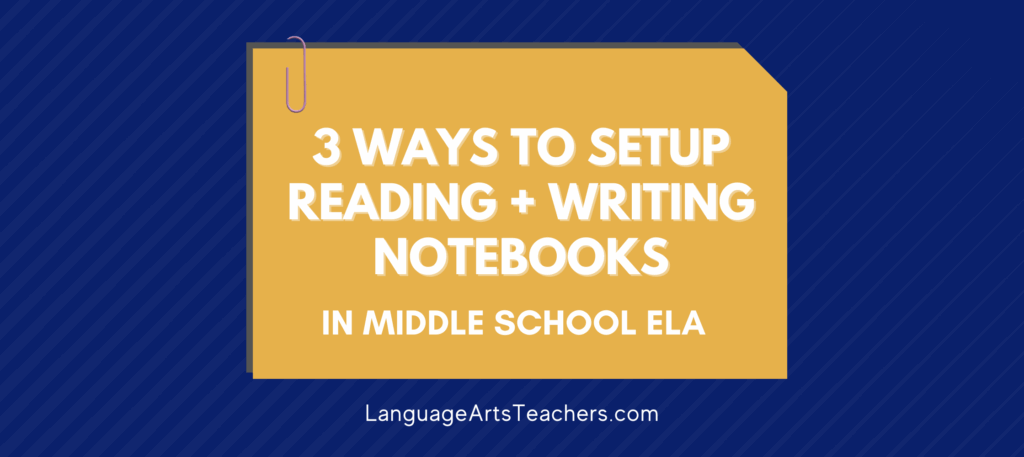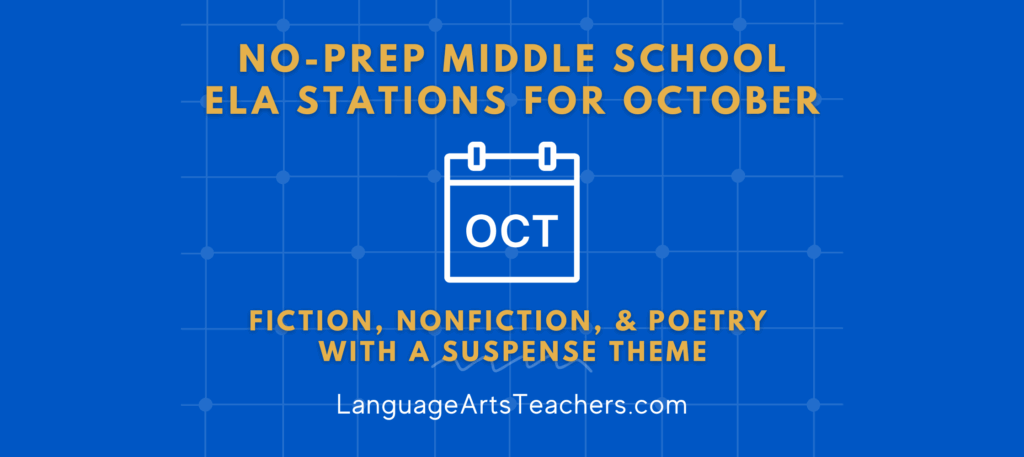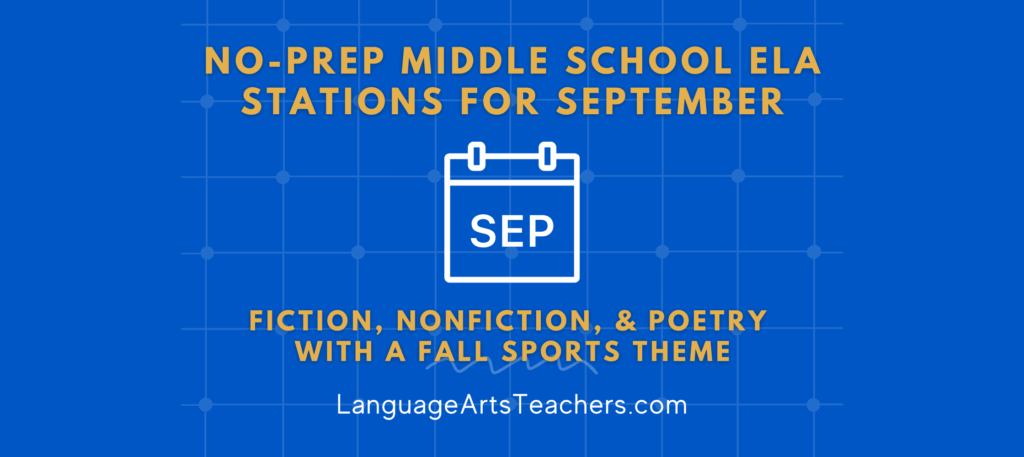“2 for 1” Assignments
Creative & Challenging Assignments
WITHOUT ALL THE GRADING
When you think of a “2 for 1” special, you think of getting a good deal— two things for the price of one
-
a half-off special
-
a 50% discount
-
buy-one-get-one free
They seem like a no-brainer, and they typically are smart decisions!
So what happens when we apply that same strategy to our classroom assignments and activities?
I’ll tell you what happens:
A “2 for 1” assignment gets students working harder, being more creative, thinking deeper, and making connections with what they’re learning.
Here’s why I call it the “2 for 1” assignment:
Basically, I combine two concepts (to be graded— two grades) into one assignment.
For instance:
I might combine a vocabulary practice with a preposition review.
“Use your ten vocabulary terms to create a cartoon / comic strip. You must also include one prepositional phrase in each cartoon “box” along with the vocabulary term. Circle each term, and underline each prepositional phrase.”
That makes it super easy to skim over and grade!!
I would then collect one assignment, glance over it by eyeing the circled and underlined parts, and record two separate grades: one for vocabulary, one for prepositions.
In another assignment, let’s say we had spent the last couple of weeks or so reading various stories and articles and maybe even viewing some compatible videos. Oh… and we’ve been learning about theme since, like, forever.
So in this case, the assignment would be to think of any three stories/topics/articles we’ve read that all have a common theme. Draw an image of each one, write a brief summary, and then explain the theme of each one. Write about how all three are connected with that same theme.
I would then collect one assignment, glance over it, and record two grades: one for explaining the theme in all three items, and the other for writing a brief, accurate summary for all three.
Working harder & being more creative:
Students have to think about multiple things at once, like how to combine a vocabulary term with an image and then write a description of it while tying in a prepositional phrase. And did I mention how writing-intensive these activities are? No fill-in-the-blank worksheet assignments here! … And that means no standing in line to use a copy machine that may or may not even work by the time you’re ready to make your copies. Work smarter, not harder— right?
Whew! That IS a lot! But it’s real life stuff because in real life, we don’t get to segment the things we learn and separate everything. We make connections and tie things together to create new understanding. Let’s give our students the same experiences in class, too.
Thinking deeper & making connections:
More solid thinking occurs when we remove concepts taught in isolation and merge them together. It forces kids to think about things longer and with more depth. Take this image for instance:
Here, students had to think about how any three things we read or learned about might be connected thematically. We had done quite a bit with the concept of theme (life lesson/moral of the story) already, so this was just an extension.
Students were able to talk about some of their favorite stories, articles, or videos from the year so far and then try to think of a common theme that any three of them contained. Then they had to create the assignment you saw in the image.
Talk about some deep thinking as they tried to connect the dots on this one! There was definitely some pretty cool in-depth, on-task discussion (and arguing!) going on with this assignment!
When all is said and done, these are not huge project grades.
This isn’t homework.
These two activities are in-class, independent assignments.
That’s not to say that the environment in the room is stressful and silent. The opposite is true— while each student has his or her own independent assignment, the nature of each of those assignments encourages students to talk with each other about what they are working on.
In fact, my desks during these activities are arranged in groups of 4-5 students so that yes, they have their own work to do, but the groups allow them to show each other what they are doing and to talk about ideas. They can’t have the exact same, word-for-word assignment, but they can definitely talk and collaborate and trade papers back and forth to see what each other is working on.
So what about the grading?
Not a big deal! One strategy that really, really works for me is to move around the room and take turns just sitting with each group of kids to listen to them talk and watch them work. I always have a clipboard with me so I can make little notes as I go.
If a kid has pretty much everything written out and is at the point of coloring it in and putting the finishing touches on it, then I jot down 100 on my notepad. Done. (And it’s two assignment grades, not just one!)
If another kid has been goofing off a majority of the time and even with several redirects still hasn’t really even started the assignment, then I jot down a “O— goofing off” and later, that grade (and comment!) are added to the online grading system (which also allows for comments on each and every grade!). If the student did part of the assignment, then that might be a 100 for, say, the prepositions but a 0 for the vocabulary part. You can assign an accurate grade for the part the student actually did do.
Yet another student may be working really hard and struggling and despite a lot of help and intervention from me, still just can’t quite get the hang of that part of the lesson. So that might become a 70 on the theme explanations along with a grade book note of “with teacher help” so that the reason for the 70 is apparent to me and to the parent. Perhaps the summary part looks much better, so the student would really end up with a 70 and a 100 in the grade book, respectively.
I would go ahead and plan to provide some support with the areas of weakness and do some re-teaching with that child. I might even go ahead and—right then and there—modify the assignment so the student can make progress and not feel overwhelmed (it’s just a daily assignment, after all).
You can significantly cut your grading time down by—
-
Thinking of ways to combine two concepts into one assignment and then assign two separate grades
-
Moving around the room as the students are working and recording notes and grades as you go
-
Interacting with kids to look for ways to modify right then and there





